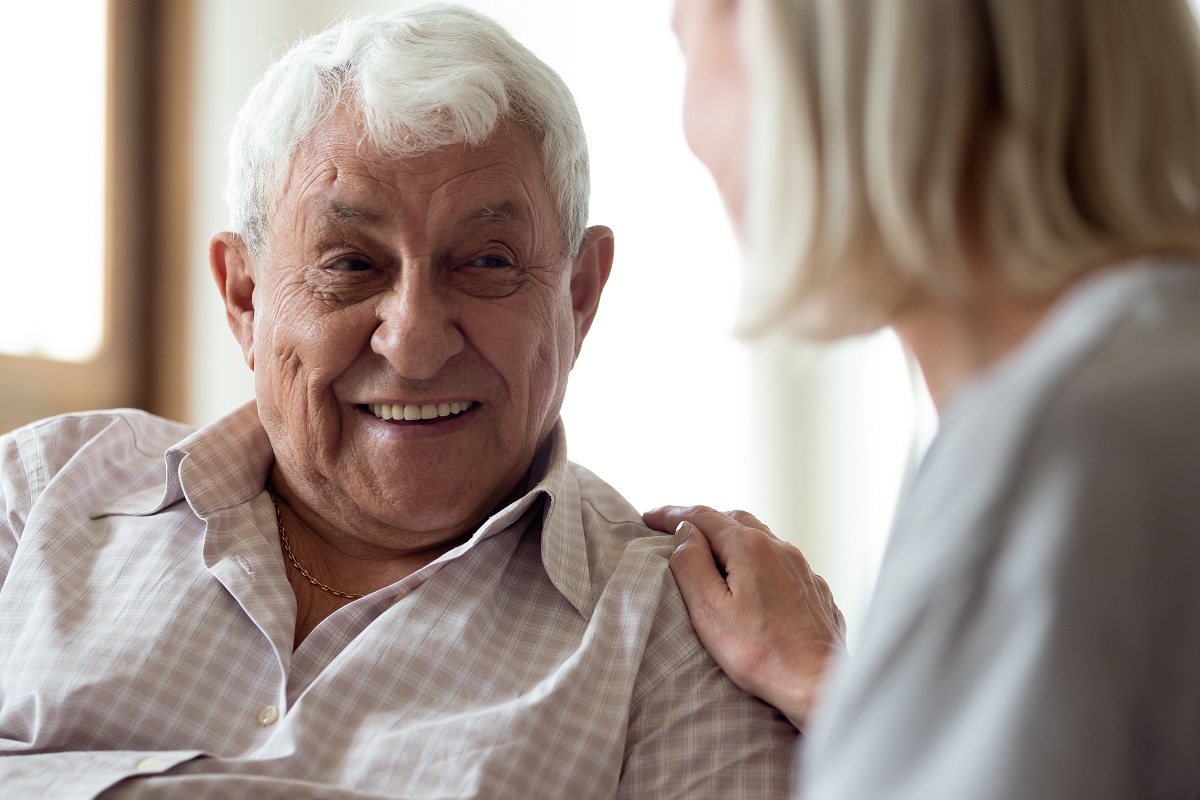Why can dementia lead to malnutrition?
Find out how to make sure your loved one with dementia gets a healthy, balanced diet that meets all their nutritional needs
In a nutshell
Malnutrition is a lack of proper nutrition, caused by not having enough to eat or not eating enough of the right things. It can happen in people with dementia for a range of reasons including loss of appetite, forgetting to eat or not being able to feed yourself.
Why does malnutrition occur?
Malnutrition can be an issue for many older people, not just those affected by dementia, because of a range of issues or health problems that tend to affect people over a certain age.
These can include physiological changes, poor appetite, low income, practical difficulties in shopping and cooking, illness and social isolation.
For someone with dementia, they may have to contend not only with the above issues, but changes within the brain could also mean they forget to eat. In some cases the brain’s regulation of appetite and their metabolism is actually disturbed because of the disease.
>> SHOP: EAT WELL SET – AN UNFORGETTABLE EXCLUSIVE
Malnutrition can be a major factor in avoidable hospital admissions for those with dementia, as becoming malnourished can greatly increase the risk of illness and infection. If you’re malnourished, you’re also more likely to be weaker and lethargic, which could increase your risk of falls – another major cause of hospital admission.
Did you know? Up to 45 per cent of people living with dementia experience clinically significant weight loss over one year, and up to half of people with dementia in care homes have an inadequate food intake.
Signs of malnutrition
The National Institute for Health and Care Excellence (NICE) defines a person as being malnourished if they have:
– A body mass index (BMI) of less than 18.5 kg/m2
– Unintentional weight loss greater than 10% within the past 3–6 months
– A BMI of less than 20 kg/m2 and unintentional weight loss greater than 5% within the past 3–6 months
>> SHOP: NON-SLIP TABLE SETTING PLACE MAT
However, as a carer, there are other signs to look out for. These include:
– Jewellery slipping off or becoming looser
– The person you care for needing to tighten their belt buckle an extra notch
– Changes in mood
– Frequent colds or infections
– Loose dentures, difficulty eating or other oral problems
– A lack of food, or food that has gone uneaten in the cupboard or fridge
– Tiredness or lethargy
– Difficulty keeping warm
– Dizziness
Treating malnutrition
If you’re worried that your loved one is becoming malnourished, you should encourage them to make an appointment with their GP so they can be assessed and weighed. This is also useful in case the weight loss is being caused by an underlying health problem (rather than just simply not eating enough food).
If it’s established that they are underweight, the doctor will probably prescribe an eating plan aimed at helping the person put weight on, which will include lots of high nutrient/high calorie foods. Typical foods could include full fat milk and cheese, buttery mashed potato, creamy soups, avocados, nuts and seeds (these can be chopped or milled if the person struggles with chewing).
Protein is very important, of which the main source is meat, but you can also serve up scrambled eggs or tofu. Meat that doesn’t require too much chewing can be a good idea, so mince dishes such as shepherd’s pie, cottage pie or Bolognese may be more suitable.
In serious cases, doctors may prescribe fortified shakes which contain large amounts of calories to increase weight as well as a range of different vitamins and minerals.
>> SHOP: BLUE ADAPTIVE CROCKERY SET
Preventing malnutrition
If you don’t live with the person, but visit regularly, try to plan visits so that you arrive in time to help them prepare a meal and eat with them.
Appeal to their sense of nostalgia and reminiscence by thinking about the types of foods they enjoyed as a child. Puddings can be a great way to do this with classics such as jam roly poly, bread and butter pudding or any kind of steamed pudding providing a good calorie boost.
If they struggle to eat large meals, try to divide food up into six smaller meals and snacks that they can eat throughout the day. If co-ordination has declined since a dementia diagnosis, finger foods can be a good choice as your loved one can usually pick up and nibble them a lot more easily.
Serve food up in bright colour-contrast adaptive crockery. Blue plates can help someone to see their food more easily because it will contrast with the food (unless of course they’re eating blue food, which is unlikely in most cases!). Adaptive cutlery could also be useful as very thin-handled knives and forks can be fiddly to hold.
If chewing and swallowing is a problem, you may have to help by pureeing foods. This is more likely to be an issue in the later stages of dementia, so they may already be needing additional care, or even be living in a nursing home. If that’s the case, the professionals should have a good idea of what they can serve up, but it’s worth letting them know (and putting it in their personal care plan) if they have any specific likes or dislikes around food.
Try using a meal delivery service to ensure your loved one is getting at least one hot meal each day.
SHARE
Explore more




